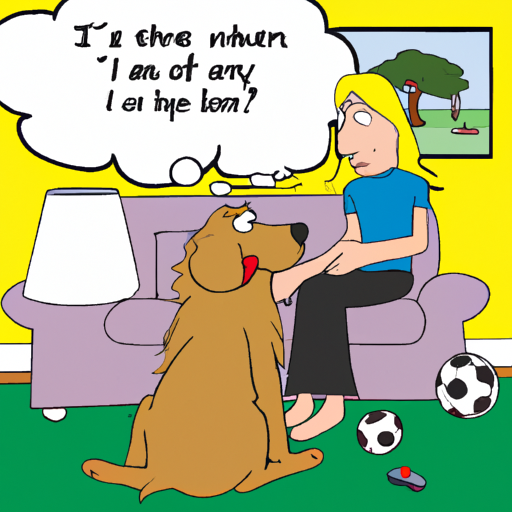Understanding Your Dog’s Emotions
As a caregiver, you have probably noticed that your furry friend’s emotions often mirror your own. Dogs are capable of experiencing a wide range of emotions, much like humans. They can feel happiness, fear, surprise, disgust, anger, and sadness. And just like humans, they have unique ways of expressing these emotions. Crying, for instance, is a common expression of distress in dogs. But what causes this heart-wrenching response in your canine companion?
Recognizing the Signs of Distress in Dogs
Dogs express their distress through a variety of signs, crying being one of the most noticeable. However, unlike human crying, which is often associated with tears, dogs cry through vocalization – whimpering, whining, yelping, or howling. Here are some common signs of distress in dogs:
- Whining or whimpering: This is often a sign of discomfort, anxiety, or fear.
- Barking: While dogs bark for a variety of reasons, excessive barking can indicate distress.
- Howling: Howling can be a sign of loneliness or separation anxiety.
- Yelping: A sharp, high-pitched yelp can indicate pain or fear.
Remember, your dog’s cries are a way for them to communicate with you. It’s important to pay attention to these cues so you can respond appropriately.
Common Causes of Crying in Dogs
The causes of dog crying are as varied as their personalities. Here are some common reasons:
- Pain or discomfort: If your dog is injured or unwell, they may cry out in pain.
- Fear or anxiety: Loud noises, new environments, or separation from you can cause your dog to cry.
- Attention seeking: Dogs are social animals. They may cry to get your attention or when they’re bored.
- Hunger or thirst: Just like humans, dogs may cry when they are hungry or thirsty.
| Cause | Potential Solution |
|---|---|
| Pain or discomfort | Visit a vet |
| Fear or anxiety | Provide comfort and reassurance |
| Attention seeking | Spend quality time with your dog |
| Hunger or thirst | Ensure regular feeding and hydration |
How to Soothe a Crying Dog
As a caregiver, your instinct will be to soothe your crying dog. Here are some steps you can take:
- Provide comfort: Hold them, talk to them in a soothing voice, or pet them gently.
- Distract them: Engage them in a game or provide a chew toy to distract them from whatever is causing them distress.
- Address the cause: If they’re hungry, feed them. If they’re bored, play with them. If they’re hurt or unwell, take them to the vet.
- Be patient: Remember, your dog is crying because they’re distressed. Don’t scold them for crying; instead, try to understand what’s causing it and address it.
Remember, each dog is unique and what works for one may not work for another. Experiment with different strategies and find what works best for your four-legged friend.
Frequently Asked Questions
Q: Do dogs cry tears?
A: While dogs have tear ducts, their tears are primarily for eye lubrication and not emotional response. Their emotional distress is usually expressed vocally.
Q: How can I tell if my dog is in pain?
A: Aside from crying, signs of pain in dogs can include changes in eating habits, unusual aggression, difficulty moving, or sudden changes in behavior.
Q: Should I take my dog to the vet if they’re crying?
A: If your dog’s crying is persistent, or if it’s accompanied by other signs of distress or illness, it’s always a good idea to consult with a vet.
Remember, as a caregiver, your role is to provide comfort and care for your furry friend. Understanding why dogs cry is a step towards better communication and a stronger bond with your canine companion.



